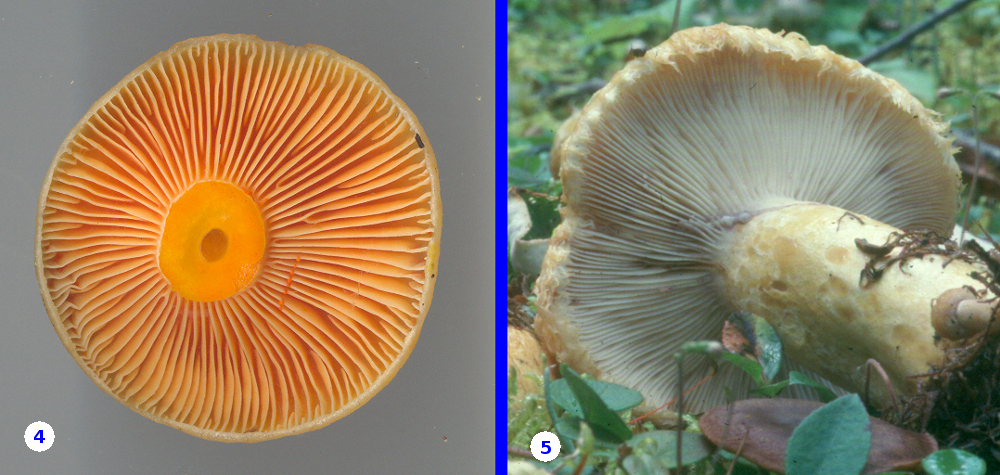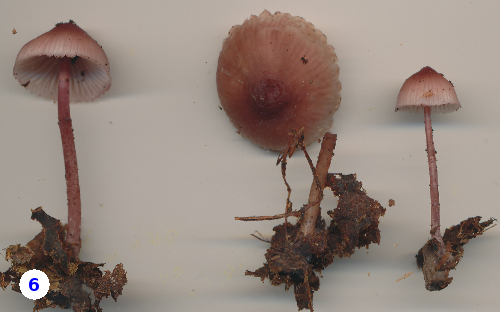LATEX



The substance called latex in mushrooms may not be true latex, but by now is stuck with the name. If you object to this term you can also call it milk, although that term is also pretty inaccurate. It is characteristic if the genus Lactarius and is the very basis for its generic name, being derived from the Latin word "lac", meaning milk.
The pictures in Panels 1 to 5 are all of Lactarius species. In each case the mushroom had been cut or broken to allow the escape of the latex. Panels 1 to 3 illustrate L. camphoratus, L. hibbardae and L. aquifluus, all species with white latex. In each case you can see the milk exuding from a fresh cut. Panel 4 shows the gill surface of L. deterrimus. Here the latex released from the cut is a bright orange color. Species of Lactarius are known with red, orange, yellow, purple and blue latex as well as a few with nearly clear watery latex.
The mushroom in Panel 5 is L representaneus a species producing particularly copious quantities of latex when injured. In that species the latex is white, but it quickly stains the flesh of the mushroom purple. Other species also have colour reactions between the latex and the flesh, but these may occur more slowly, sometimes only after several hours. Even where the flesh remains unstained the latex itself may change colour, most commonly going from white to yellow. These colour changes are very important in distinguishing species of Lactarius, so you must watch the latex continuously for 2-5 minutes after it has been released and then check back after an hour or two again. Carefully note both changes in latex colour and changes in the flesh that has come in contact with it.
Although the vast majority of mushrooms producing latex are species of Lactarius, there are a few others that may "bleed". One of these is Mycena haematopus, seen in Panel 6. This species does not produce latex from its gills and pileus, but only from its stipe. The latex of Mycena haematopus is thin, watery and blood red, hence its species name which means "bloody foot". The specimens in the picture don't show any latex, but the notes on the collection say it was present when the stipe was first broken.
Not every collection will provide quantities of latex. Old or partly dried specimens will produce none at all. This can be frustrating. You will get the best results from young fresh fruiting bodies, even immature ones. The best way to see it is to make a small cut with a sharp knife or razor along the gills where they meet the stipe or right along the edge of the cap where it meets the gills. You can see in each of the photos where the cut was made.
TASTE
One thing we do not usually encourage among beginners is the tasting of mushrooms for identification. Until you are experienced enough to recognize the more seriously toxic mushrooms it is best not to put them in your mouth. That being said, it is important to record the taste of the flesh of both Russula and Lactarius species. If you can recognize members of these two genera you are at no risk tasting a small amount of their flesh. What you are trying to determine is whether the flesh is acrid or not. If it is, it can be as buring hot as the most intense chili sauce. The acrid substances are especially concentrated in the latex of Lactarius species, so that you only need a little of the latex on your tongue to experience the effect.